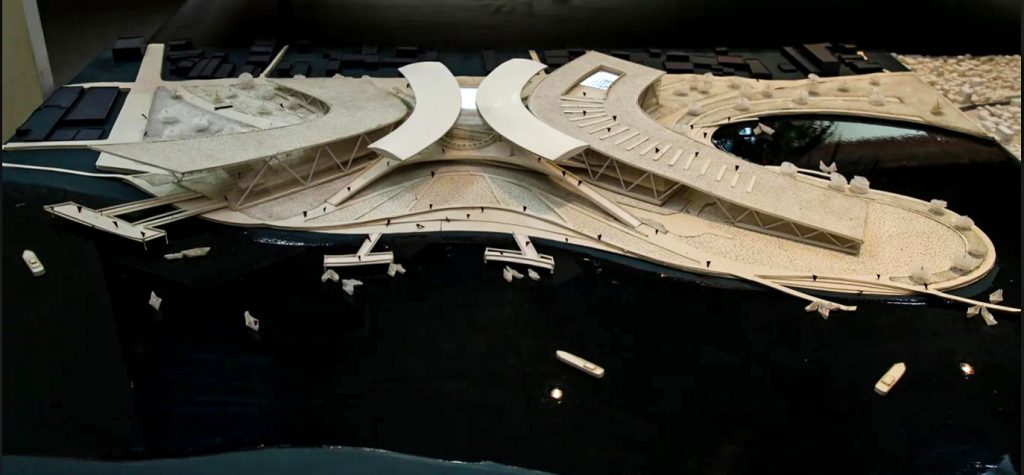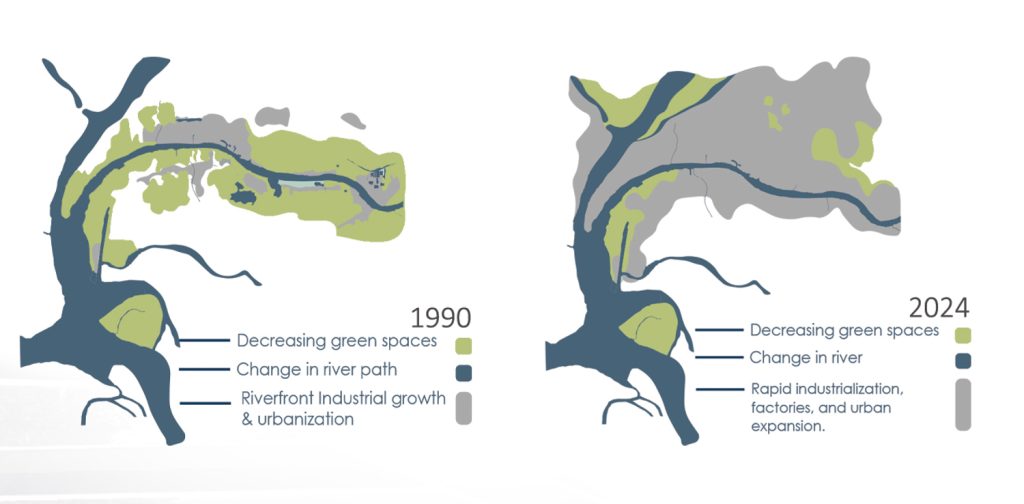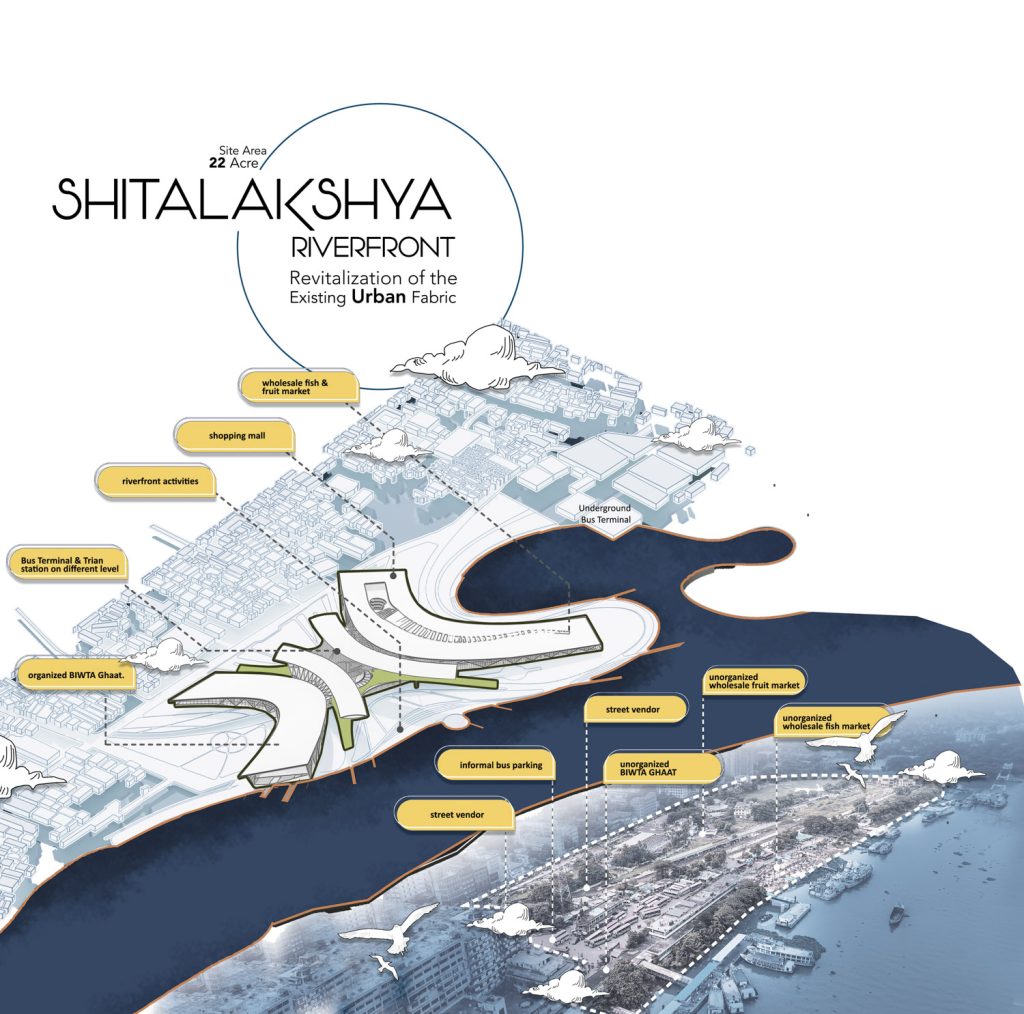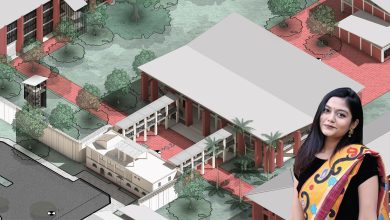Biproy Kanti Das, a final-year student from the Department of Architecture at Brac University, completed his 2024 thesis project under the supervision of Md. Habib Reza. His thesis, titled “Shitalaksya Riverfront Development: Revitalization of the Existing Urban Fabric, Narayanganj,” focuses on transforming the neglected yet vibrant riverfront area surrounding the Narayanganj Railway Station. Located in one of Bangladesh’s most historically rich and commercially active zones, the project aims to bring new life to a place where the railway station, bus terminal, fish and fruit markets, and river ghat all come together in a dense and dynamic setting.


The Shitalakhshya Riverfront holds immense cultural and economic value for the people of Narayanganj. It has long been a center of trade, transportation, and social exchange. However, over the years, this area has become overcrowded and disorganized. Biproy’s research identifies several major challenges that prevent the riverfront from reaching its full potential. The first problem is physical disconnection. The unplanned arrangement of the wholesale markets and the BIWTA terminal has blocked both physical and visual access to the river, cutting people off from the scenic waterfront.


The second issue is severe traffic congestion caused by informal bus terminals and the presence of street vendors, which makes pedestrian movement difficult. There is also functional inefficiency, as the lack of proper organization in markets and transport hubs reduces productivity and convenience for both traders and visitors. Furthermore, continuous encroachment has reduced the amount of usable public space, leaving residents with very few places for relaxation and social interaction.


To solve these issues, Biproy’s project sets out a clear goal: to revitalize the Shitalakhshya Riverfront by creating a multifunctional urban space that promotes balance among ecology, economy, and community. His proposal focuses on four main objectives. The first is ecological restoration, ensuring the river’s natural health and biodiversity are protected and improved. The second is economic development through better organization and efficiency in the markets and transportation systems. The third goal is social inclusivity, by designing accessible and lively public spaces where people from all backgrounds can gather and enjoy the riverfront. Lastly, the project aims to make Narayanganj more resilient to environmental and social changes through sustainable design practices.

In the design stage, Biproy followed the principles of New Contextualism, ensuring that the proposal responds to the site’s existing conditions. The design seeks to improve pedestrian movement towards the river by removing obstacles such as illegal bus parking, scattered vendors, and the barrier effect of railway tracks. The building forms are designed to be open, allowing natural ventilation and uninterrupted views of the river. By lifting structures upwards, the design maximizes visibility and airflow. A green corridor runs through the site, connecting pedestrians directly to the river through a landscaped buffer zone that promotes ecological restoration and social activity.


The proposal maintains the existing position of the railway station, while introducing a new concourse on the opposite side of the river. The BIWTA launch terminal is reorganized within its original area to improve functionality. An exhibition hall is placed along the main road, serving as a cultural space to preserve and celebrate the lost traditions and heritage of Narayanganj.


The wholesale fish and fruit markets are connected directly to the river for easy transportation and trade, while a shopping mall is located near residential neighborhoods to support local economic growth. The central concourse acts as the main entry point for the railway, bus, and launch terminals, tying all modes of transport into one cohesive system.




